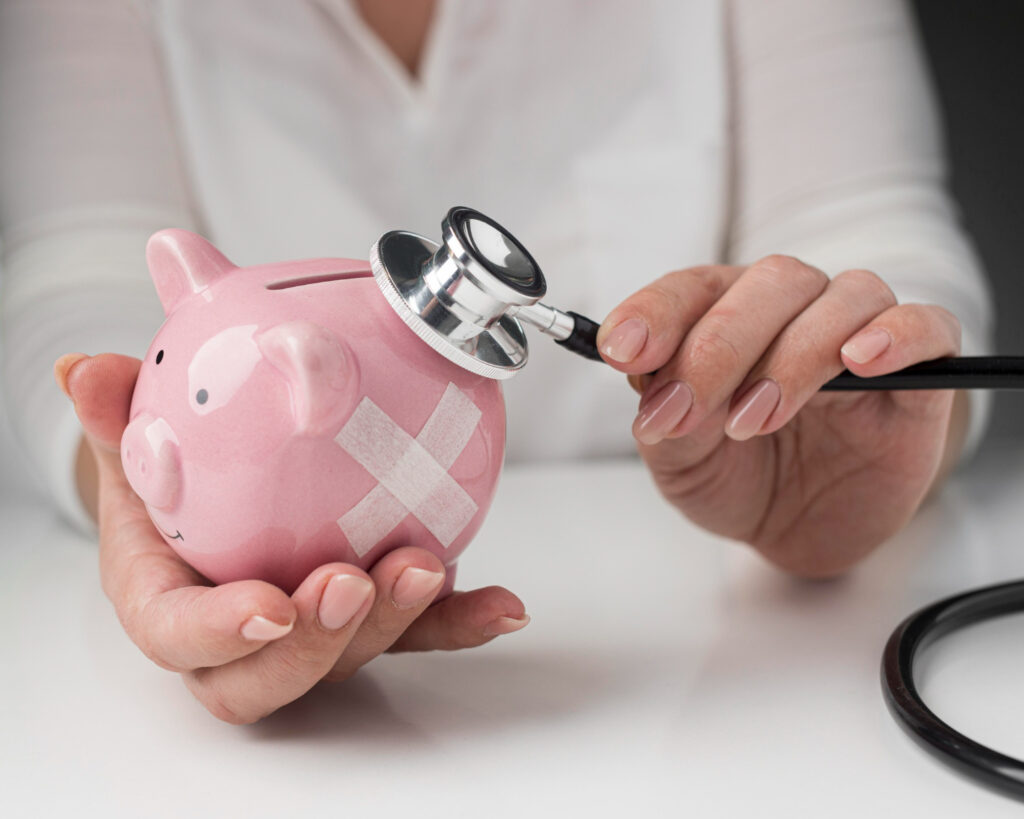We all know that healthy smile feeling—teeth smooth as glass after a cleaning, gums that don’t bleed when you floss, and breath fresh enough for close conversations. But let’s be real: dental care can get expensive fast. Between routine cleanings, unexpected fillings, and those fancy electric toothbrushes the hygienist keeps recommending, maintaining your oral health can take a serious bite out of your wallet.
The good news? You don’t need to spend a fortune to keep your pearly whites in great shape. As someone who’s winced at dental bills myself, I’ve gathered practical, science-backed strategies that help maintain oral health without maxing out your credit card.
The True Cost of Neglecting Oral Care
Before diving into money-saving tips, let’s talk about why cutting corners on oral health isn’t the bargain it might seem. According to the American Dental Association, preventive care costs significantly less than treating problems once they develop:
- A regular cleaning: $75-$200
- A single filling: $150-$350
- A root canal: $700-$1,500
- A crown: $800-$3,000
- A dental implant: $3,000-$4,500
Those numbers make a compelling case for investing in prevention. The question becomes: how can we invest smartly?
Daily Habits That Save Your Teeth and Your Wallet
Perfect Your Brushing Technique (It’s Free!)
Many of us learned to brush as kids and haven’t thought about it since. But proper technique matters more than expensive products:
- Brush for a full two minutes, twice daily
- Hold your brush at a 45-degree angle to your gums
- Use short, gentle strokes
- Don’t scrub too hard (which can damage enamel and gums)
- Clean all surfaces: outer, inner, and chewing
A $2 manual toothbrush used correctly will outperform a $200 electric toothbrush used poorly every time.
Floss Like You Mean It
At around $2-4 per container, dental floss is one of the most cost-effective health investments available. Yet according to surveys, only about 30% of Americans floss daily.
Regular flossing prevents gum disease and cavities between teeth where brushing can’t reach. If traditional floss hurts or frustrates you, try:
- Floss picks (slightly more expensive but easier to use)
- Water flossers (higher upfront cost but can be worth it if you’ll actually use it)
- Interdental brushes for larger spaces
The best floss is the one you’ll actually use daily.
Fluoride: Your Enamel’s Best Friend
Fluoride strengthens enamel and makes teeth more resistant to acid attacks from bacteria. Most city water supplies contain fluoride—essentially giving you free cavity protection every time you drink tap water instead of bottled.
For maximum benefit:
- Use fluoride toothpaste (look for the ADA seal)
- Don’t rinse immediately after brushing—spit out excess toothpaste but let the fluoride residue sit on your teeth
- Consider an inexpensive fluoride mouthwash for use at a different time than brushing
Hydration: The Overlooked Oral Health Hero
Drinking plenty of water throughout the day helps wash away food particles and bacteria while stimulating saliva production. Saliva is your mouth’s natural defense system, containing compounds that neutralize acids and remineralize enamel.
Plain water is essentially free and has zero calories or additives that might harm teeth—making it the perfect beverage for both your health and budget.
Smart Shopping for Oral Care Products
Toothbrushes: When to Save vs. Splurge
The ADA recommends replacing your toothbrush every 3-4 months. When shopping:
- Look for soft bristles (medium and hard bristles can damage enamel and gums)
- Choose a small head that can reach all areas of your mouth
- Watch for sales and buy in multi-packs
- Consider store brands—many are manufactured in the same facilities as name brands
If you do invest in an electric toothbrush, focus on longevity and replacement head costs rather than fancy features. Many dentists recommend simple sonic models over premium options with multiple settings you’ll never use.
Toothpaste: What Matters and What’s Marketing
Walk down any toothpaste aisle and you’ll see dozens of specialized formulas promising everything from whitening to sensitivity relief. The truth is most ADA-approved toothpastes contain similar active ingredients:
- Fluoride (cavity protection)
- Mild abrasives (cleaning)
- Detergents (foaming action)
- Flavoring agents
Save money by:
- Buying regular-sized tubes on sale rather than travel sizes
- Looking for store brands with the ADA seal
- Avoiding specialty formulas unless addressing a specific problem
- Using the right amount—a pea-sized dollop is all you need
Mouthwash: Necessary or Nice-to-Have?
While not essential, mouthwash can complement brushing and flossing. For budget-conscious consumers:
- Choose alcohol-free formulas (less irritating and often equally effective)
- Look for store brands with similar active ingredients to name brands
- Dilute stronger formulations according to package directions
- Use as directed—more isn’t better and wastes product
DIY Oral Care Approaches: What Works and What Doesn’t
Oil Pulling: Ancient Practice, Mixed Evidence
Oil pulling—swishing oil (typically coconut) around your mouth for 15-20 minutes—has gained popularity as a natural oral care technique. While some users report whiter teeth and fresher breath, scientific evidence remains limited.
If you try it:
- Use common cooking oils you already have
- Don’t use it as a replacement for brushing and flossing
- Be aware that results vary widely
Baking Soda: Gentle Abrasive Power
Baking soda has mild abrasive properties that can help remove surface stains from teeth. At about $1 per box, it’s incredibly economical.
How to use it safely:
- Mix a small amount with water to form a paste
- Use occasionally (1-2 times weekly) rather than daily
- Always brush gently when using abrasives
DIY Whitening: Proceed with Caution
Many budget whitening methods like lemon juice, activated charcoal, or hydrogen peroxide can damage enamel if used incorrectly. Instead, try:
- Limiting stain-causing foods and drinks (coffee, tea, red wine)
- Rinsing with water after consuming staining substances
- Using a straw for acidic or colored beverages
- Adding whitening toothpaste to your regular routine (but don’t expect dramatic results)
Navigating Professional Dental Care on a Budget
Finding Affordable Dental Providers
Even with excellent home care, professional cleanings remain essential. To find affordable options:
- Dental schools: Treatment by supervised students at 50-70% off standard rates
- Community health centers: Sliding scale fees based on income
- Dental savings plans: Membership programs offering discounted services
- Preventive-focused practices: Some dentists offer affordable preventive packages
Making the Most of Dental Insurance
If you have dental insurance:
- Schedule preventive visits that are typically 100% covered
- Plan major work across calendar years to maximize annual benefits
- Ask about alternative treatments that might be covered at higher percentages
- Request pre-treatment estimates for expensive procedures
Questions to Ask Before Treatment
Before agreeing to any dental work:
- “Is this treatment urgent or can it wait?”
- “Are there alternative approaches that cost less?”
- “Do you offer payment plans?”
- “What happens if we monitor this condition for now?”
Good dental professionals understand budget concerns and can help prioritize treatment.
Lifestyle Choices for Healthier Teeth
Diet: Your First Line of Defense
What you eat affects your teeth as much as how you clean them:
- Limit sugary snacks and drinks (bacteria convert sugar to enamel-eroding acid)
- Choose crunchy fruits and vegetables that clean teeth while you chew
- End meals with cheese or nuts, which neutralize acids and provide minerals for remineralization
- Drink water instead of soda or juice
These choices benefit both oral health and your grocery budget.
Habits That Save Teeth and Money
- Quit smoking/tobacco use (reduces gum disease risk and eliminates staining)
- Wear a nightguard if you grind your teeth (preventing expensive damage)
- Address dry mouth, which increases cavity risk (stay hydrated, check medications)
- Chew sugar-free gum with xylitol after meals when you can’t brush
Special Situations: Children, Seniors, and Specific Conditions
Budget-Friendly Children’s Oral Care
- Start dental visits by age 1 to catch problems early
- Ask about sealants—plastic coatings that prevent decay in molars
- Teach proper brushing techniques early (makes lifetime care easier)
- Create positive associations with oral care through fun routines
Seniors: Adapting Care as Needs Change
- Look into senior discount programs at dental practices
- Address dry mouth issues common with aging and medications
- Maintain diligent care of existing dental work to extend its lifespan
- Consider simplified routines if dexterity becomes challenging
Managing Common Conditions Affordably
For issues like:
- Sensitivity: Try desensitizing toothpaste before costly treatments
- Receding gums: Focus on gentle brushing techniques and proper tools
- Staining: Address causes first (coffee, tea, smoking) before cosmetic procedures
- Bad breath: Improve tongue cleaning and hydration before specialized products
Consistency Beats Luxury
The most budget-friendly approach to oral health isn’t about finding the cheapest products—it’s about using basic, effective tools consistently and correctly. A $2 toothbrush used properly twice daily will always outperform expensive gadgets used sporadically.
By focusing on prevention, making informed consumer choices, and seeking value-based professional care, you can maintain a healthy smile without draining your bank account. Your teeth—and your wallet—will thank you.

Disclaimer: This article is intended for informational purposes only and does not constitute professional dental or medical advice. Always consult with qualified dental professionals regarding your specific oral health needs. References to pricing are estimates only and may vary significantly based on location, individual providers, and specific circumstances.



